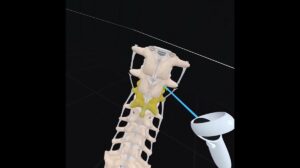NEW YORK (Reuters Health) – Geographically, higher rates of surgery for early stage nonsmall cell lung cancer (NSCLC) are associated with improved survival, even in older and sicker patients, researchers report in a July 28th on-line paper in Cancer.
As Dr. Nancy L. Keating told Reuters Health by email, “This study was prompted by the fact that many patients with early-stage lung cancer do not undergo curative resection, particularly older and sicker patients. There is a lot of uncertainty about the benefits of surgery, yet resection has by far the highest chance of cure.”
Dr. Keating of Harvard Medical School, Boston and colleagues made use of a geographic analysis to shed more light on the effectiveness of surgery. The team examined a population-based cohort of more than 17,000 Medicare beneficiaries aged at least 66 years who were diagnosed with stage I or II NSCLC during 2001 to 2005.
Areas with high and low rates of curative surgery for early stage lung cancer were compared to estimate the effectiveness of surgery. Less than 63% of patients underwent surgery in low-surgery areas, whereas more than 79% did in high-surgery areas.
More patients with COPD and more of advanced age were operated on in the high surgery areas. The 1-year lung-cancer-specific mortality was lower in high-surgery areas (12%) than in low-surgery areas (16.9%). The adjusted odds ratio for each 10% increase in the surgery rate was 0.86. There were similar findings for all-cause mortality.
“We found,” Dr. Keating continued, “that areas with high rates of surgery tended to operate on older and sicker patients, yet still had better outcomes for early-stage lung cancer than areas with lower use of surgery.”
“These data,” she concluded, “suggest that areas with lower surgery rates may benefit from higher rates of surgery. It may be that fear of harm (surgeons being concerned about causing poor outcomes) may be leading to relative underuse of this effective treatment. While there are some patients for whom the risks certainly outweigh the benefits, those patients may be fewer than some physicians recognize.”
Cancer 2011.




